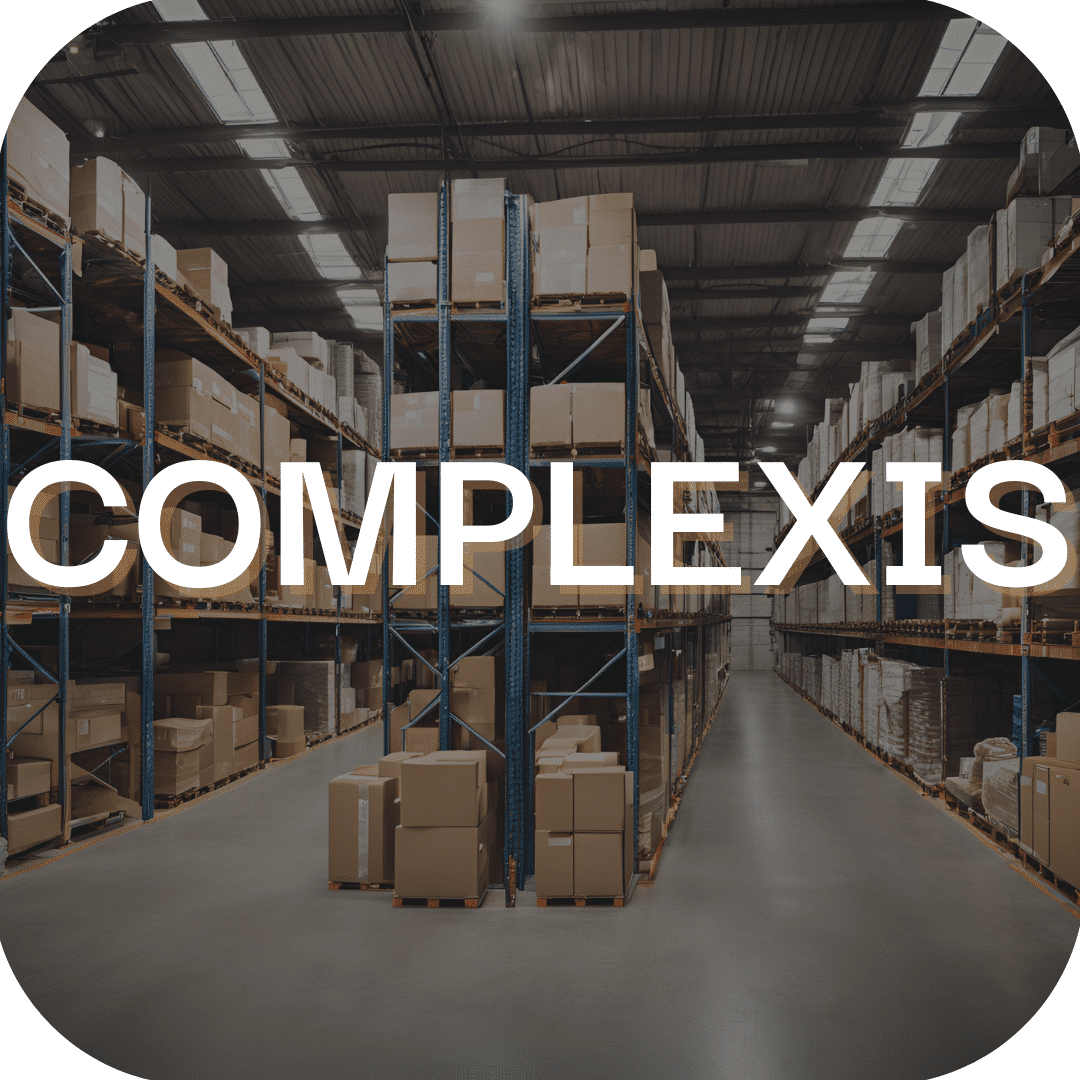Description
Tailored Management Approaches for Effective Warehouse Operations
Welcome to the COMPLEXIS Store Keeper page, where we unveil our specialized approach to enhancing warehouse management through our unique COMPLEXIS methodology. This methodology is designed to optimize the role of a storekeeper by focusing on key personality traits and operational competencies essential for effective warehouse management. Here’s how COMPLEXIS can transform your warehouse operations:
Understanding COMPLEXIS
COMPLEXIS is an advanced artificial intelligence system tailored to identify and differentiate various profiles, from supportive coaches to structured strategists. Our system offers insights and recommended actions that are customized for each management style, empowering individuals to excel in their respective roles.
The Role of a Store Keeper
A storekeeper in an industrial setting is pivotal. They are not just managing the inventory; they are the linchpins in the logistics that drive the supply chain. Effective storekeeping goes beyond mere organization—it involves strategic planning, efficient operations, and proactive handling of warehouse responsibilities.
COMPLEXIS Approach for Storekeepers
Our COMPLEXIS methodology pinpoints the critical traits and skills for storekeepers, categorized under the profiles of Coordination, Organization, Manual Handling, Planning, Logistics, Efficiency, Expertise, Inventory, and Storage (COMPLEXIS). Here’s how each trait contributes to a storekeeper’s success:
- Coordination (C): Ensures seamless integration with sales, purchasing, and logistics, enhancing the efficiency of operations.
- Organization (O): Critical for maintaining an orderly stock and storage management system that allows for quick access and processing.
- Manual Handling (M): Empowers storekeepers with the skills needed for the physical aspects of warehouse management, from moving goods to organizing space.
- Planning (P): Enables foresight in inventory needs and daily operations, ensuring readiness and efficiency.
- Logistics (L): Manages the end-to-end process of goods flow, from receipt to dispatch, optimizing the supply chain.
- Efficiency (E): Focuses on maximizing productivity and minimizing waste and delays within warehouse operations.
- eXpertise (X): Provides storekeepers with deep knowledge of inventory items, storage procedures, and the latest in inventory management technology.
- Inventory (I): Involves accurate tracking and management of stock levels to meet business needs without excess.
- Storage (S): Pertains to the proper storing and preservation of goods, ensuring quality and accessibility.
Benefits of Applying COMPLEXIS to Storekeeping
By applying the COMPLEXIS methodology to the role of a storekeeper, warehouses can achieve:
- Increased Efficiency: Streamline operations and reduce time wasted on inefficient practices.
- Enhanced Accuracy: Improve inventory accuracy, reducing errors in stock levels and orders.
- Better Decision Making: Foster a data-driven environment where decisions are made on solid insights and real-time inventory data.
- Improved Employee Satisfaction: Equip storekeepers with the tools and knowledge they need to succeed, leading to higher job satisfaction and reduced turnover.
The COMPLEXIS Store Keeper approach is more than just a set of guidelines—it’s a comprehensive strategy tailored to the unique demands of warehouse management. With our focused profiles, storekeepers are not only equipped to handle their day-to-day tasks more effectively but are also prepared to tackle challenges proactively and innovatively.
Daily and Regular Actions for a Storekeeper: Enhancing the Efficiency of Operations
A storekeeper’s role is multifaceted, encompassing various responsibilities that require attention to detail and proactive management. Here are key daily and regular actions across the themes of COMPLEXIS tailored to enhance the efficiency of warehouse operations:
Organization (O)
- Sort and categorize new stock as it arrives to maintain systematic storage.
- Regularly review and update storage layout to optimize space and accessibility.
- Conduct periodic audits to ensure physical inventory matches database records.
- Label shelves and bins clearly for easy identification and retrieval of items.
- Implement visual management systems like color coding to speed up item location.
Manual Handling (M)
- Follow proper lifting techniques to avoid injuries and ensure safety.
- Use handling equipment like forklifts or pallet jacks appropriately to move goods.
- Organize items efficiently to maximize space and minimize handling time.
- Regularly inspect handling equipment for safety and efficiency.
- Rotate stock based on FIFO (First In, First Out) principles to manage inventory freshness.
Planning (P)
- Forecast inventory needs based on historical data and upcoming demands.
- Schedule receiving and shipping to avoid bottlenecks.
- Plan workforce allocation according to daily and seasonal workload.
- Develop contingency plans for unexpected spikes in demand or supply chain disruptions.
- Review and adjust plans regularly based on performance metrics.
Logistics (L)
- Coordinate with transportation for timely receipt and dispatch of goods.
- Track incoming and outgoing shipments to ensure accuracy and completeness.
- Manage documentation for shipping and receiving, including bills of lading and invoices.
- Optimize routing within the warehouse to reduce travel time and increase throughput.
- Collaborate with suppliers and customers to streamline logistics processes.
Efficiency (E)
- Implement lean warehouse practices to minimize waste of time, space, and resources.
- Use automation tools for inventory management to reduce errors and labor.
- Monitor key performance indicators (KPIs) to identify areas for improvement.
- Conduct regular training sessions for staff to improve speed and accuracy.
- Simplify processes wherever possible to enhance operational flow.
Expertise (X)
- Stay updated on the latest warehouse management systems and technology.
- Attend workshops and training in inventory management and product handling.
- Share knowledge with team members to elevate collective skill levels.
- Develop a deep understanding of the most handled products to provide better care and storage.
- Engage in continuous learning about industry best practices and new tools.
Inventory (I)
- Perform regular stock counts to maintain accurate inventory records.
- Use barcode scanners or RFID systems for quick inventory checks.
- Analyze inventory turnover rates to optimize stock levels.
- Report discrepancies in inventory immediately to address issues promptly.
- Update inventory information in the management system in real-time.
Storage (S)
- Maintain optimal environmental conditions for stored goods to preserve quality.
- Ensure proper security measures are in place to protect inventory.
- Use ergonomic storage solutions to facilitate easy access and reduce strain.
- Keep storage areas clean and orderly to prevent damage and loss.
- Regularly inspect stored items for signs of damage or expiration.
These actions, when implemented consistently, can significantly enhance the efficiency and effectiveness of warehouse operations, ensuring that storekeepers manage their responsibilities effectively and contribute positively to the organization’s supply chain dynamics.
For more information on implementing COMPLEXIS in your operations, contact us today.




